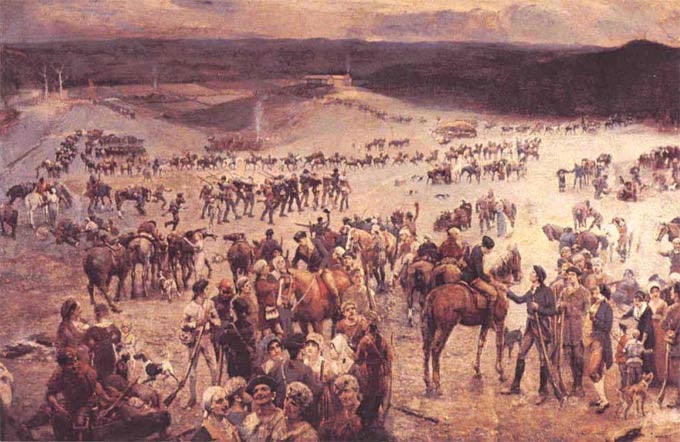The Treaty at Sycamore Shoals
Published 2:34 pm Monday, May 29, 2023
|
Getting your Trinity Audio player ready...
|
BY JADON GIBSON
Contributing columnist
Chief Dragging Canoe, Chief Oconostota and other chiefs agreed on March 17, 1775 to sell lands including most of present-day Kentucky. It also included a large tract of land in Tennessee.
Former judge Richard Henderson agreed to pay the Indians with arms and powder. The British were not apprised of this and were displeased because it would make the Indians a much greater threat on the borderland, where the pioneers lived and worked in close proximity to the Indians.
Henderson had almost reached an agreement with the Cherokees the previous year. Prior to the new discussions he advertised for settlers by promising 500 acres to all who would raise a crop of corn on the new land. He stated that fifty soldiers would be hired for protection and would receive 500 acres each in payment.
The guns, lead, powder, rum, flour, blankets and sacks of corn to be exchanged were loaded onto six wagons and transported to Sycamore Shoals (Elizabethton) on the eastern edge of Tennessee.
It was an impressive sight when Chiefs Dragging Canoe, Chief Oconostota, Little Carpenter and Raven in their regalia, arrived and filed past the cabins and wagons for a glimpse at the goods to be exchanged. It was valued at 10,000 pounds in British currency at that time. More than 1,200 Cherokee tribesmen arrived and mingled about the valley.
During the discussion, Oconostota arose and with great emotion opposed the historic sale urging his people to refuse and resist further encroachment of the white men. Several of the Indians exhibited aggressive behavior.
The agreement was struck the following day however even though Chief Dragging Canoe had previously told Daniel Boone there would be much trouble in settling the land known as “Kain-tuck the Dark and Bloody Ground.”
Boone did not remain for the signing as he was commissioned by Henderson to blaze the trail and explore the newly acquired region along with his band of 30 axe men.
He traveled north to Moccasin Gap and then turned westward crossing Clinch River and Powell Mountain. After crossing Powell River they soon arrived at the massive Cumberland Mountains and traveled along its base westward underneath a great wall of white rock near what is now Ewing, Virginia. This impressive landmark can be seen from Highway 58 just 11 miles or so east of Cumberland Gap.
“Every heart is bounding with joy and excitement as we begin to discover the pleasing and rapturous appearance of Kentucky,” one of the member’s of Boone’s party wrote in his journal “So rich a soil we have never seen before. It is covered with clover in full bloom. The woods are alive with wild game. The turkeys are so numerous as though nature had spread a feast for us all. It almost induces us in imitate Columbus and kiss the soil of Kentucky as he kissed the sand on his first setting foot on the shores of America.”
They pushed onward into Kentucky blazing the trail to what is now the Kentucky River.
A savage attack by Indians left several of their party dead and wounded prompting Boone’s men to begin constructing a fort. Henderson and additional men were anxiously coming to Boone’s assistance but they wondered when.
Upon their arrival Boone’s men gave them a salute of gunfire. It was with great difficulty they eventually arrived. The day of their arrival was declared a day of festivity. The fort would become known as Boonesborough.
The 13 colonies declared their independence from British rule July 4, 1776. The following day, settlers from present-day Tennessee petitioned North Carolina for annexation. In 1777 North Carolina established Washington County, which included most of Tennessee. That year Kentucky became the westernmost county of Virginia.
Settlers steadily flowed into Kentucky most using Wilderness Road and passing through Cumberland Gap. By 1790 Kentucky’s population was 73,000 and growing and in 1792 she was admitted into the union.
In the mid 1790’s Wilderness Road was widened to allow passage by wagons resulting in an even greater westward migration.
My wife and I revisited Fort Boonesborough just off Interstate 75 near Lexington just a just a few years ago. It is an outstanding replica staffed by period craftsmen. It’s a wonderful place to spend a morning or afternoon.
Jadon Gibson is a writer from Harrogate, Tennessee. Thanks to Lincoln Memorial University, Alice Lloyd College and the Museum of Appalachia for their assistance.






